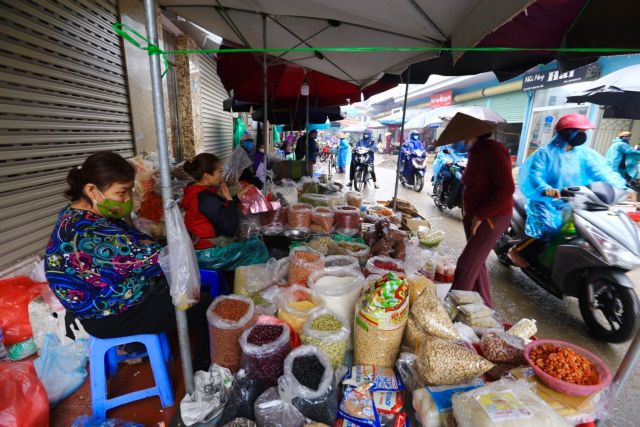 Society
Society


|
| A food stall in Gia Lâm market in Long Biên District, Hà Nội. — VNA/VNS Photo Minh Quyết |
HÀ NỘI — Hà Nội took the lead managing food safety over agro-forestry-fishery production last year.
According to the Ministry of Agriculture and Rural Development (MARD)’s newly released rankings, the city was top with 91.5 out of a possible 100 points, a big jump from the 11th position in the previous rankings.
It was followed by Bạc Liêu, Nam Định, Cần Thơ, Quảng Ngãi, Thanh Hóa, Hòa Bình, Quảng Bình, Sóc Trăng and Long An provinces.
The results of 2018 have encouraged localities to improve food safety management which saw many provinces in the lower tier making breakthroughs.
Last year, 16 out of 63 provinces and cities ranked good in food safety management while 45 others were said to meet requirements on food safety management.
Đồng Tháp and Bình Dương were the only provinces in the country not to be ranked, as they failed to hand in relevant documents to the MARD.
The rankings have been compiled annually by the MARD since 2015. They are based on the direction and management of food safety; advocacy, education, and communications to raise public awareness and adherence to legal documents on food safety; inspections and the handling of violations in food safety; strengthening the management of food safety; and the development of safe food supply chains.
Nguyễn Như Tiệp, head of the National Agro-Forestry Fisheries Quality Assurance (NAFIQAD) under the MARD, praised good supervision and stopping the use of banned substances in animal husbandry.
Last year, as many as 4,700 facilities violated regulations on food safety, a decrease of 7.3 per cent compared with the 2018 figure. The total administrative fines collected last year was VNĐ33 billion (US$1.4 million).
The country now has 11,521 farms and farming households and 624 seafood facilities covering 5,000 hectares meeting VietGAP (Vietnamese Good Agricultural Practices) standards.
About 4,800 communes across the country have been recognised as meeting food safety regulations.
According to Phùng Đức Tiến, deputy minister of Agriculture and Rural Development, while achievements have been made in the management of food in agricultural sector, there is still room for improvement.
He emphasised the need to tighten the administration on pork due to the effect of African swine fever.
The obstacle that reduce competitiveness of Vietnamese agricultural products was that most of them were produced small scale with backward processing technology, Tiến pointed out.
He proposed the agricultural sector to set forth plans to settle problems, especially those relating to food safety.
Tiến asked the NAFIQAD to strengthen coordination between agencies to minimise biological pollution and residue of plant protection chemicals as well as antibiotics in production, while boosting trade of agro-forestry-fishery products, meeting food safety requirement for domestic consumption and for export to foreign markets.
Food safety month
In another development, the Ministry of Health has called for enhancing inspections on food safety and implementation of the National Action Month on Food Safety.
The action month, which is expected to be launched in mid-April, aims to raise management roles of the local authorities and a better sense of responsibility for producers, businessmen and customers in food hygiene and safety.
During the month, the Việt Nam Food Administration is assigned to direct food safety sub-departments in provinces and cities to be serious in the fight against trade fraud, smuggling and trading of counterfeit goods.
All cases of violations should be strictly dealt with and information should be publicised in the media so people can be informed.
The local authorities are also expected to launch a campaign on safe food compliance, prevention of food contamination and food poisoning, especially collective food poisoning cases. — VNS




